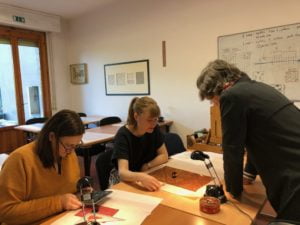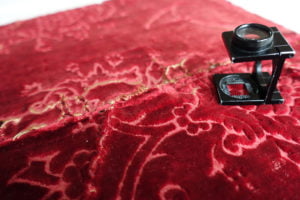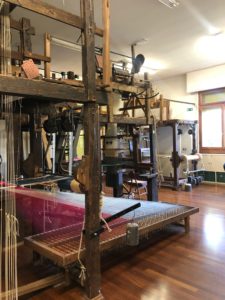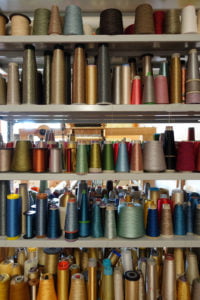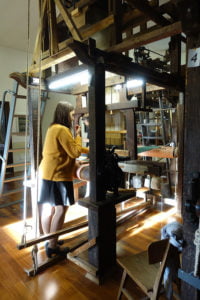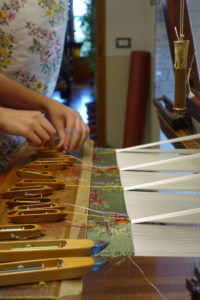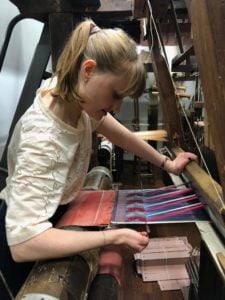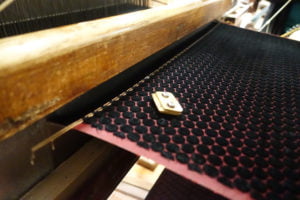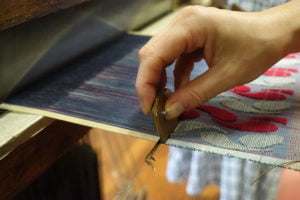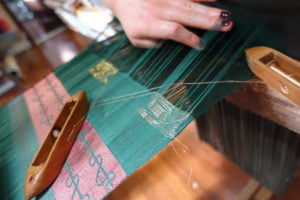Renaissance weaving
Date: 21–25 October 2019
Location: Fondazione Arte della Seta Lisio, Florence
Expert makers: Eva Basile
How were the fabrics of the Renaissance made? How does it feel to make a rich cut and uncut velvet fabric? Can trying out methods at the loom help us to understand the way a fabric is constructed? What kinds of skills did early modern weavers use to create fashionable new materials?
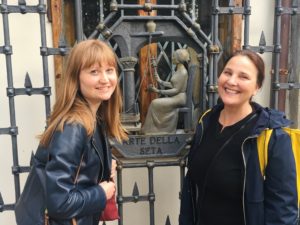 Most fabrics in the early modern period were woven on looms by professional weavers. To create the elaborate brocades, delicate satins, and plush velvets so fashionable in this era was both complicated and time consuming, and weaving was a highly developed art. It can be difficult to appreciate the ingenuity of weavers when we observe surviving textiles, without closely looking at the ways the threads were manipulated to create visual and tactile effects. In order to learn how to look and understand the remarkable surviving textiles of this era, we decided to gain hands-on experience in weaving on hand looms.
Most fabrics in the early modern period were woven on looms by professional weavers. To create the elaborate brocades, delicate satins, and plush velvets so fashionable in this era was both complicated and time consuming, and weaving was a highly developed art. It can be difficult to appreciate the ingenuity of weavers when we observe surviving textiles, without closely looking at the ways the threads were manipulated to create visual and tactile effects. In order to learn how to look and understand the remarkable surviving textiles of this era, we decided to gain hands-on experience in weaving on hand looms.
This week-long workshop took place at Fondazione Arte della Seta Lisio in Florence, Italy, and was created for Paula Hohti and Sophie Pitman and taught by Eva Basile.
Aims:
- To experience weaving and analysing a range of weave structures used between 1550 and 1650
- To learn to identify and analyse a range of fibres used in the early modern period (wool, linen, hemp, silk, cotton)
- To understand both simple and complex weave structures
- To test making a range of complex silk fabrics, including cut and uncut velvet, brocade, and lampas
- To learn how to read and document weave structures, and analyse surviving textiles using these methods
- To try out tablet weaving and fingerloop braiding
Outcomes:
- We learned about a wide range of historical weaving techniques and technologies
- We experienced a range of different fibres and structures, and developed methods of documenting weave structure
- We were able to experience the feeling and challenges of weaving complex structures by hand on large jacquard treadle looms
- We learned about the challenges and risks of making cut velvet, and the complexities of designing fabrics and warping a loom
- We thought carefully about the ways fabric was created, used, and given economic and cultural importance in the sixteenth- and seventeenth centuries


